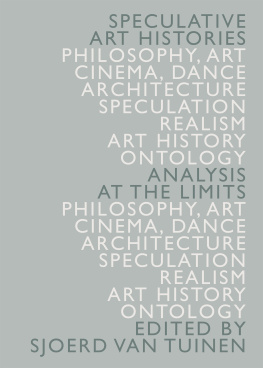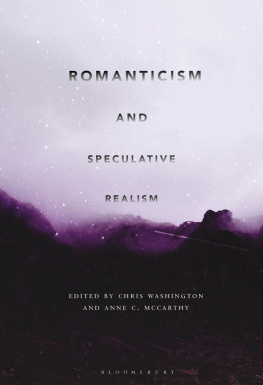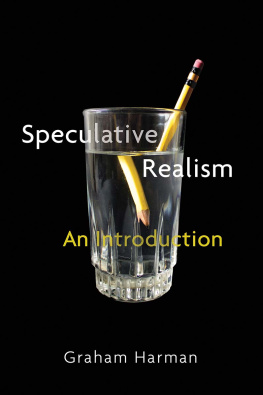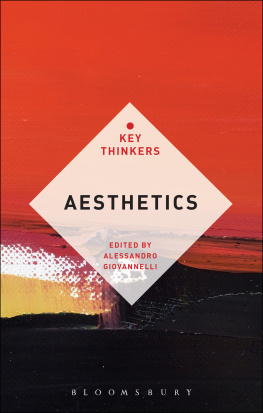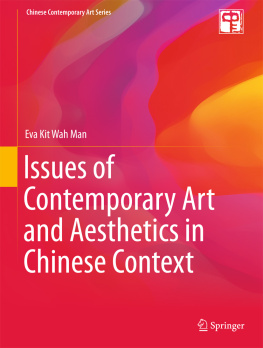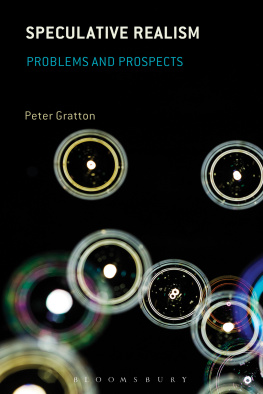Mackay Robin (editor) - Speculative Aesthetics
Here you can read online Mackay Robin (editor) - Speculative Aesthetics full text of the book (entire story) in english for free. Download pdf and epub, get meaning, cover and reviews about this ebook. year: 2014, publisher: Urbanomic, genre: Art. Description of the work, (preface) as well as reviews are available. Best literature library LitArk.com created for fans of good reading and offers a wide selection of genres:
Romance novel
Science fiction
Adventure
Detective
Science
History
Home and family
Prose
Art
Politics
Computer
Non-fiction
Religion
Business
Children
Humor
Choose a favorite category and find really read worthwhile books. Enjoy immersion in the world of imagination, feel the emotions of the characters or learn something new for yourself, make an fascinating discovery.

- Book:Speculative Aesthetics
- Author:
- Publisher:Urbanomic
- Genre:
- Year:2014
- Rating:5 / 5
- Favourites:Add to favourites
- Your mark:
- 100
- 1
- 2
- 3
- 4
- 5
Speculative Aesthetics: summary, description and annotation
We offer to read an annotation, description, summary or preface (depends on what the author of the book "Speculative Aesthetics" wrote himself). If you haven't found the necessary information about the book — write in the comments, we will try to find it.
Speculative Aesthetics — read online for free the complete book (whole text) full work
Below is the text of the book, divided by pages. System saving the place of the last page read, allows you to conveniently read the book "Speculative Aesthetics" online for free, without having to search again every time where you left off. Put a bookmark, and you can go to the page where you finished reading at any time.
Font size:
Interval:
Bookmark:
This e-Book edition published in 2014
by
Urbanomic Media Ltd,
The Old Lemonade Factory,
Windsor Quarry,
Falmouth TR11 3EX
United Kingdom
The roundtable discussion Speculative Aesthetics took place in the Gradidge room at the Artworkers Guild, London, on 4 March 2013.Proceedings of the presentations and subsequent discussions throughout the day were recorded for transcription and redaction prior to publication.Publication of this volume was supported byUniversity for the Creative Arts.
Urbanomic Media Ltd. All rights reserved.
No part of this book may be reproduced or transmitted in any form or by any means, electronic or mechanical, including photocopying, recording or any other information storage or retrieval system, without prior permission in writing from the publisher.
ISBN 978-0-9575295-7
www.urbanomic.com


In contemporary art today a constant reconceptualisation of artistic practice goes hand-in-hand with a perpetual renegotiation of its relation to the affective. The resultant thirst for new approaches has ensured a somewhat hasty appropriation of concepts developed under the (now rather splintered) rubric of speculative realism [SR],
Given contemporary arts cultural privileging as the site of negotiation between the conceptual and the sensory, it is understandable that it should have played host to the convergence of SR and aesthetics. Yet such an alliance is puzzling when one considers what SR might bring to this negotiation, in so far as its primary selling point (according to the popularly diffused credo) is its dismissal of the mediating role of human experience. Indeed, if this movement is concerned with wresting attention away from the primacy of intuition and interpretation, it could be (and has been) construed as an anti-aesthetic tendency.
In fact the adoption of SR into art practice and (more prevalently) art discourse has been determined less by an engagement with such concerns than by a series of symptomatic synchronicities. Its endorsement was boosted by the convergence of the anti-correlationist theme with ruminations on climate change and the anthropocene (a world without us). Likewise, its concern with nonhuman actants or material complicities speaks to the great inhuman networks within which we know we are enmeshed, but whose complexity artists struggle to figure.
Yet there are also specific and irresistible gains for art here: In its object-oriented guise, where every object whatsoever subsists on the same ontological plane, but simultaneously withdraws from our experience of it, SR art realizes, more economically than the avant-gardes provocations or the social experiments of relational aesthetics, that old dream of levelling the artwork with a non-art universe: An artwork is simply a thing, in meek and equal existence with other things (fridge; wombat; pen-lid; asteroid; crime-report; proton, etc.). Yet object-orientedness enlivens a retrenchment from expanded practice back to the autonomous object with the thrill of philosophical profundity: in a cosmic reinvigoration of the readymade, any object whatsoever, when supplemented with a faith in the subversive power of objectality as such, becomes not only art but also practical philosophy (multiple juxtaposed objects drawn from disparate fields even more sowhat curator would not be invigorated by the notion that the Peoples Liberation Army is commensurate with a coffee cup?). Following conceptualisms acknowledged failure entirely to collapse aesthetic experience into conceptual proposition, SR makes possible a new art after philosophy in which a vacuously general concept ( object , thing , or material ) can mysteriously transform any stuff whatsoever into an aesthetically and philosophically significant experience. And finally, the promise of a great levelling of the geological and the anthropic, culture and nature, quarks and clerks into one gigantic objectal matrix converges happily with the flat eclecticism of the New Aesthetic and the Post-Internet generationan endlessly multifarious universe that comes prequantified into discrete and isomorphic tumblr thumbnails. The concepts at work here are loose at best; the aesthetic effects as desultory as the curatorial apologia are extravagant.
In the face of this disappointing (if sociologically intriguing) phenomenon, the first stipulation for a project on speculative aesthetics had to be that it refuse to create further materials for the construction of a speculative aesthetic or to contribute further to the mannerism of speculative art practice. The discussion documented in this volume, which initiated a longer-term project, focused on the structure of the aesthetic component of experience. When the latter is regarded as plastic rather than transcendentally immutable, it suggests a set of definite questions in relation to the philosophical affirmation that cognition grasps a real that is not of its own making, and that its capacities may be reshaped as a function of that real. The participants in this discussion explore ways in which a study of aesthetics can provide pointers for interrogating the conceptual underpinning of representation, and can furnish materials for an understanding of how experience is structured by various material regimes, from chemistry to digital media; and how these determinations are miscognized in received ideas of the aesthetic. This in turn gives onto the issues that arise from considering the structuring of the aesthetic as an act of political force, and its relation to subjectivation. As far from the idioms of the SR art genre as this may seem, speculative aesthetics here reaffirms a relation between the aesthetic and human creativity , but within a conceptual framework that refuses to relinquish either of them to ineffability or to immutability. Across the varied contributions to this discussion, aesthetics is both naturalized (it is rooted in that vast memory bank that is the evolutionary history of the species) and denaturalized (the intuitive legitimacy of its spontaneous forms is challenged by synthetic experiences), representation is rehabilitated, abstraction materialized, and cognition accelerated.
But before moving beyond the closed circle of art so as to orient the question of aesthetics in this way, the discussion sets out from an analysis of the stance of the contemporary art genre in relation to the aestheticthat of a peculiarly ambivalent aesthesophobia .
An examination of the image (i.e. aesthetic mediation) and its relation to contemporary arts quest for subversive political potency reveals a contradiction: The image is seen to index a real beyond the shackles of language, beyond temporal politics, beyond established power and frameworks of measure and assessment, and thus in a certain sense free of the constraining forces of the world. Yet despite this faith in the radical potential of aesthetic experience, any actual, particular imageincluding those that art itself producesis assumed inevitably to be corrupted by those same forces. Aesthetic experience, incapable of realising its radical potential, can only gesture towards it, and must constantly strive to evade determination (or delegate it to the viewer). In the ensuing crisis, contemporary art vigilantly exposes its own compromises with the aesthetic, in an ongoing admission of failure and culpability.
Thus art seeks to discover in the freedom, indistinctness and fluidity of the aesthetic a figure for real freedom beyond politics, yet finds any image that works to be complicit with structures of power. In parallel with certain strains of SR, it attempts to overcome these established powers of representation by turning to forms of scientificity or literality that would bypass them, undoing the culpable particularity of its images (i.e., their correlational complicity with particular forms of representation). It mimics a stance of scientific objectivity in relation to its own methods and forms in order to pursue the chimera of an unmediated (uncorrelated) imagethe phantasm of a practice which, finally directly accessing the radical level of aesthetic essence, would be absolutely free.
Next pageFont size:
Interval:
Bookmark:
Similar books «Speculative Aesthetics»
Look at similar books to Speculative Aesthetics. We have selected literature similar in name and meaning in the hope of providing readers with more options to find new, interesting, not yet read works.
Discussion, reviews of the book Speculative Aesthetics and just readers' own opinions. Leave your comments, write what you think about the work, its meaning or the main characters. Specify what exactly you liked and what you didn't like, and why you think so.

